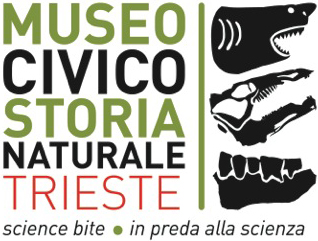Bonfiglio L. (a cura di), 2005 – “Paleontologia dei Vertebrati in Italia”. evoluzione biologica, significato ambientale e paleogeografia”. Mem. Mus. Civ. St. Nat. Verona, 2 serie, sezione Scienze della Terra, 6: 238 pp.
Citton, P., Nicosia, U., Nicolosi I., Carluccio, R., Romano, M., 2015 – Elongated theropod tracks from the Cretaceous Apenninic Carbonate Platform of southern Latium (central Italy). Palaeontologia Electronica 18.3.49A, 1–12.
Citton, P., Romano, M., Carluccio, R., D’Ajello Caracciolo, F., Nicolosi, I., Nicosia, U., Sacchi, E., Speranza, G., Speranza, F., 2017 – The first dinosaur tracksite from Abruzzi (Monte Cagno, Central Apennines, Italy). Cretaceous Research (2017), doi: 10.1016/j.cretres.2017.01.002
Dal Sasso C. & Signore M., 1998 – Exceptional soft-tissue preservation in a theropod dinosaur from Italy. Nature, 392: 383-387.
Dal Sasso C. & Maganuco S., 2011 – Scipionyx samniticus (Theropoda: Compsognathidae) from the Lower Cretaceous of Italy. Osteology, ontogenetic assessment, phylogeny, soft tissue anatomy, taphonomy and palaeobiology. Memorie della Società Italiana di Scienze Naturali e del Museo Civico di Storia Naturale di Milano, 37(1): 1-281.
Dal Sasso, C., Pierangelini, G., Famiani, F., Cau, A., Nicosia, U., 2016. First sauropod bones from Italy offer new insights on the radiation of Titanosauria between Africa and Europe. Cretaceous Research, xxx (2016), 1–22. http://dx.doi.org/10.1016/j.cretres.2016.03.008
Dal Sasso C, Maganuco S, Cau A., 2018 – The oldest ceratosaurian (Dinosauria: Theropoda), from the Lower Jurassic of Italy, sheds light on the evolution of the three-fingered hand of birds. PeerJ 6:e5976 DOI 10.7717/peerj.5976
Dalla Vecchia F. M., 2008 – Vertebrati fossili del Friuli. Pubblicazione n. 50 . Ed. Museo Friulano Storia Naturale, Udine, ISSN 1121-9548: 303.
Garilli V., Klein N., Buffetaut E., Sander P.M., Pollina F., Galletti L., Cillari A., Guzzetta D., 2009 – First dinosaur bone from Sicily identified by histology and its palaeobiogeographical implications. – N. Jb. Geol. Paläont. Abh., 252: 207–216.
Leonardi G., 2008 – Vertebrate ichnology in Italy. Studi Trent. Sci. Nat., Acta Geol., 83: 213-221
Leonardi G. & Mietto P., 2000 – Dinosauri in Italia: le orme giurassiche dei Lavini di Marco (Trentino) e gli altri resti fossili italiani, Accademia Editoriale, Pisa – Roma: 438.
Marzola M, Dalla Veccia F.M., 2014 – Dinosaur tracks from the Dolomia Principale (Upper Triassic) of the Carnic Prealps (Friuli-Venezia Giulia, NE Italy). Bollettino della Società Paleontologica Italiana, 53 (1), 2014, 1-18.
Nicosia U. & Loi M., 2003 – Triassic Footprints from Lerici (La Spezia, northern Italy). Ichnos, 10: 127-140.
Nicosia U., Ronchi A. & Santi G., 2000 – Permian tetrapod footprints from W Orobic Basin (northern Italy). Biochronological and evolutionary remarks. Geobios, 33 (6): 753-768.
Nicosia U., Marino M., Mariotti N., Muraro C., Panigutti S., Petti F.M. & Sacchi e., 2000 – The Late Cretaceous dinosaur tracksite near altamura (Bari, southern Italy). I Geological framework. Geol. Romana, 35 (1999): 231-236.
Petti F. M, Antonelli M., Citton P. Mariotti N., Petruzzelli M., Pignatti J., D’Orazi Porchetti S., Romano M., Sacchi E., Sacco E., Wagensommer A., 2020 – Cretaceous tetrapod tracks from Italy: a treasure trove of exceptional biodiversità. In: Romano M., Citton P. (Eds.), Tetrapod ichnology in Italy: the state of the art. Journal of Mediterranean Earth Sciences 12 (2020), xx-xx: 31-55.



